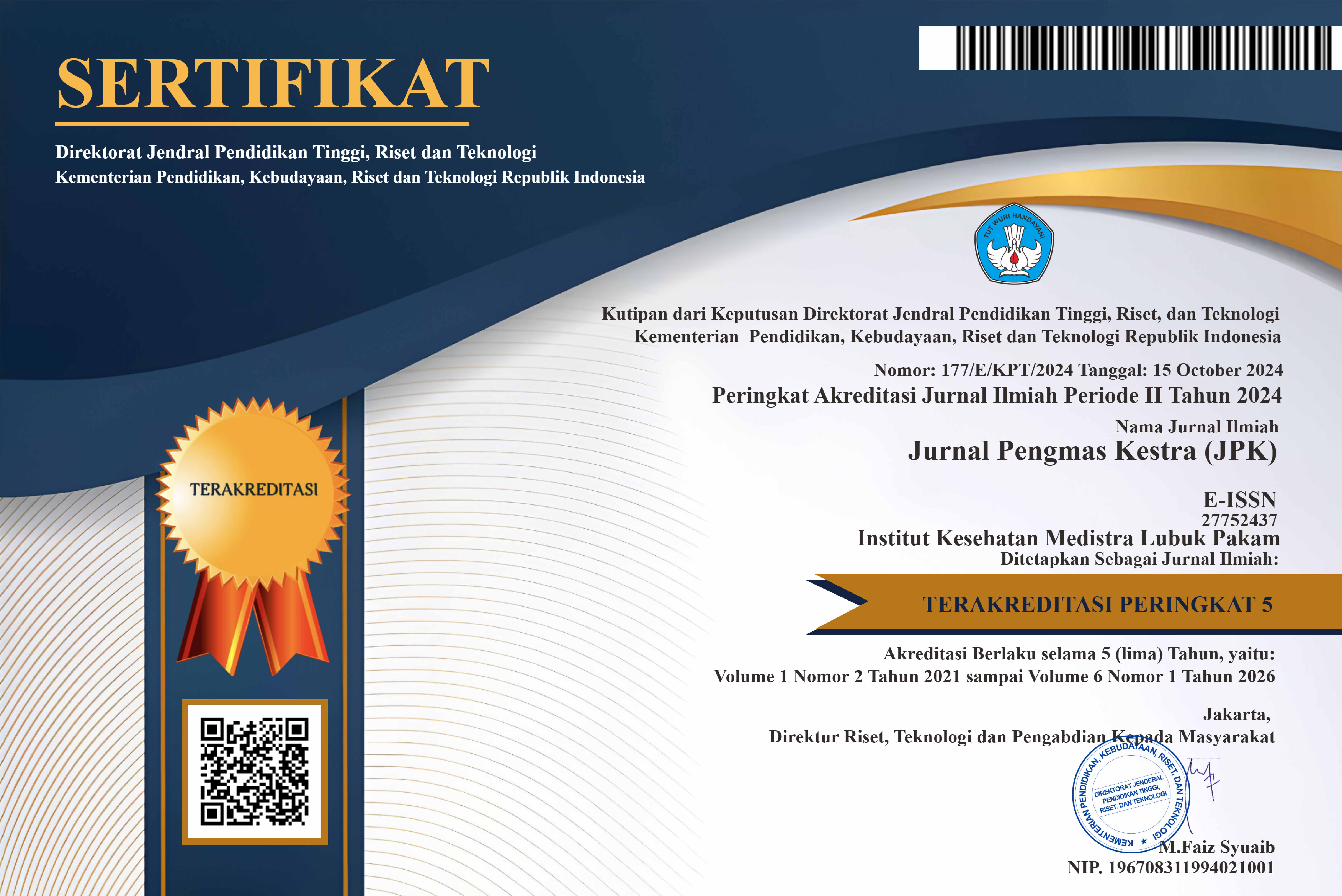EDUCATION RELATED TO THE EFFECT OF TRUNK MUSCLE EXERCISE ON REDUCING THE RISK OF FALLING IN THE ELDERLY
EDUCATION RELATED TO THE EFFECT OF TRUNK MUSCLE EXERCISE ON REDUCING THE RISK OF FALLING IN THE ELDERLY
DOI:
https://doi.org/10.35451/jpk.v2i2.1471Keywords:
trunk muscle exercise, elderly, risk of fallingAbstract
Decreased physical function and a significant increase in the risk of disability and dependency are typical of older adults. Muscle strength is a strong predictor of severe mobility limitations, slow walking speed, increased risk of falls. Research provides justification for the use of trunk muscle exercise therapy which plays a restorative and accommodative role in minimizing loss of stability in the elderly through improving balance and mobility thereby reducing the risk of falls. This community service activity (PKM) uses a lecture technique by providing education about Education Related to the Effect of Trunk Muscle Exercise on Reducing the Risk of Falling in the Elderly. The media used in the lecture technique. Implementation of PkM activities for the elderly, carried out through notifications via the internet by filling out a Google form with a sample size of 12 elderly. The results obtained are increased knowledge related to education related to the effect of trunk muscle training on reducing the risk of falling in the elderly
References
Barnett A, Smith B, Lord SR, Williams M, Baumand A. Community‐based group exercise improves balance and reduces falls in at‐risk older people: a randomised controlled trial. Age and ageing. 2003 Jul 1;32(4):407-14.
Brady AO, Straight CR, Evans EM (2014) Body composition, muscle capacity, and physical function in older adults: an integrated conceptual model. J Aging Phys Act 22:441–452
Frontera WR, Rodriguez Zayas A, Rodríguez N (2012) Human aging muscle: understanding sarcopenia at the single muscle fiber level. PM&R Clin NA 23:201–207
Gill TM, Allore HG, Hardy SE, Guo Z (2006) The dynamic nature of mobility disability in older persons. J Am Geriatr Soc 54:248–254
Manini TM (2011) Development of physical disability in older adults. Curr Aging Sci 4:184–191
Mijnarends DM, Koster A, Schols JMGA, Meijers JMM, Halfens RJG, Gudnason V, Eiriksdottir G, Siggeirsdottir K, Sigurdsson S, Jónsson PV, Meirelles O, Haris T (2016) Physical activity and incidence of sarcopenia: the population-based AGES-Reykjavik Study. Age Ageing. doi:10.1093/ageing/afw090
Nupoor Kulkarni1, Kalliopi Pouliasi, Marina Theodoritsi, Aashirwad Mahajan, Elias Panagiatopolous, Subhash Khatri, Elias Tsepis. Impact of Group Exercise Programme on Fall Risk in Elderly Individuals: A Pilot Study. International Journal of Health Sciences & Research (www.ijhsr.org) 265 Vol.7; Issue: 4; April 2017.
Thomas S, Mackintosh S, Halbert J. Does the „Otago exercise programme‟ reduce mortality and falls in older adults?: a systematic review and metaanalysis. Age and ageing. 2010 Sep 4:afq102
World Health Organization(2015). World report on ageing and health
Downloads
Published
Issue
Section
License
Copyright in each article is the property of the Author.




















